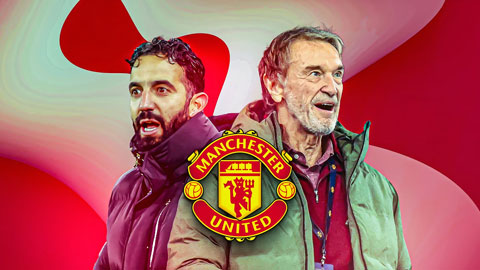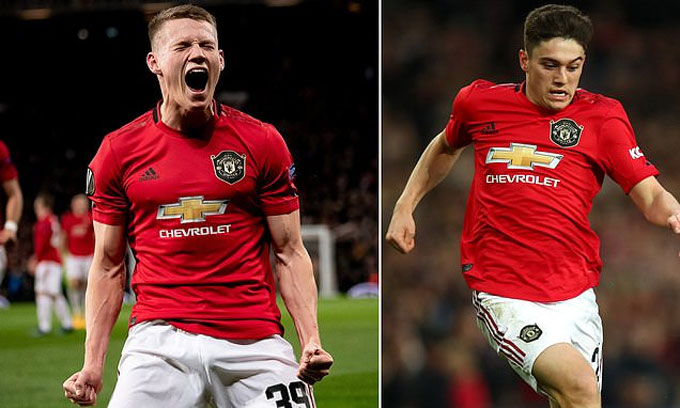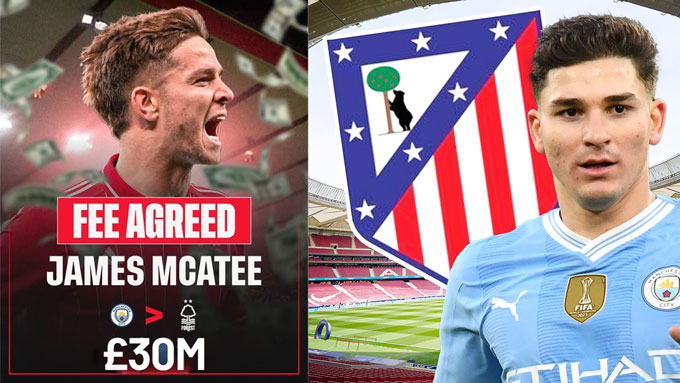For more than a decade since Sir Alex Ferguson retired, MU spent billions of tables to rebuild the squad but the results were often disappointed. Not only is it ineffective in shopping, the Red Devils also show an alarming weakness in the field of selling players.
Statistics humiliated from Daniel James and McTominay
Daniel James is a rare case that brings profits to Man United. Joining from Swansea in 2019 for £ 15 million, he was sold to Leeds just two years later with a fee of 25 million pounds. However, it was almost the only exception in a decade.
Scott McTominay, an adult from the Carrington furnace, was sold to Napoli for about £ 25.7 million in 2024. It is worth mentioning that, in the first season in Serie A, the Scottish midfielder helped Napoli win the championship and also made a list of Golden Ball nominations. The price of £ 25 million that Man United earned so it became more and more cheap.
Over the past 10 years, only two other big deals, Angel Di Maria and Romelu Lukaku, have brought a higher amount of money, but in fact, heavy losses. Di Maria left Real Madrid to Old Trafford for £ 59.7 million but only a year later was sold to PSG for £ 44.3 million. Similarly, Lukaku was bought from Everton with £ 75 million, then moved to Inter Milan with 68 million pounds.
It is not surprising that the summer transfer window 2025 is witnessing the familiar helplessness of Man United. Despite spending nearly 200 million pounds to recruit Maheus Cuha, Bryan Mbeumo, Benjamin Sesko and Diego Leon, the Red Devils have not yet collected any money from selling people. Names like Jadon Sancho, Alejandro Garnacho, Antony, Tyrell Malacia and even Rasmus Hojlund have been for sale, but so far has not found a new stop.
Liverpool and Man City – Master selling players
Compared to Man United, Liverpool and Man City are the opposite models. In the summer of 2025, Liverpool sold Luis Diaz to Bayern Munich, earning 10 million pounds of profits compared to the amount of money spent on Porto to recruit him in 2022.
Not stopping there, they also earned £ 70 million from the “homegrown” players such as Jarell Quanusah, Ben Doak, CaoMhin Kelleher and Tyler Morton. Even the Trent Alexander-Arnold deal to Real Madrid, who has only one month of contract with Liverpool, also brought 10 million pounds. In 2024, they collected 40 million pounds when selling Fabio Carvalho and Sepp van Den Berg to Brentford, although the two almost did not contribute to the first team.
Man City is no less. This summer, they collected £ 60 million only for selling James Mcatee, Yan Couto and Maximo Perrone. The most memorable is Julian Alvarez. The Argentine player was bought from River Plate for £ 14 million in 2022, but only two years later went to Atletico Madrid for a huge fee of 65 million pounds. In the same period, Man City also received £ 20 million from selling Taylor Harwood-Bellis to Southampton.
Meanwhile, Man United let potential players leave at low prices and quickly increase the value in the new team. Anthony Elanga left Old Trafford to Nottingham Forest for 20 million pounds in 2023, but in the summer of 2025 was bought by Newcastle for 55 million pounds. Dean Henderson, leaving Man United at the same time to go to Crystal Palace with £ 15 million, then became the god to help Palace win the FA Cup.
Causes and challenges ahead
A source revealed to ESPN that before Sir Jim Ratcliffe and Ineos Group took over the partial Man United in 2024, the sellers selling players were dominated by the Glazer family. They often keep players for too long, even renew their contracts just to save money instead of buying new people. But when the value of the player dropped, Man United was almost impossible to sell or was forced to “discharge goods” in the last days of the transfer period to get some money to compensate for the huge expenditure.
That situation explained why Man United increasingly lag. Many players left without finding a big club, as David de Gea took a new year to have a new stop after breaking up Old Trafford, Martial had to go to Greece to wear AEK Athens, and Lindelof and Eriksen are still unemployed after leaving Man United this summer. When even the players who were dismissed by Man United were not attractive in the eyes of the market, which reflected the quality of the bad squad that the club has built for many years.
However, Man United now has a new apparatus with football director Jason Wilcox and recruiting director Christopher Vivell. After 18 months of reform, the task set them very clearly: turning the Man United player into a valuable asset on the transfer market, and learning how to operate smartly like Liverpool, Man City and other competitors.
From now on the deadline of 1/9, what happens to Sancho, Garnacho, Malacia, Antony and Hojlund will be a measure that Man United has “deciphered” the transfer problem or continued to stand behind the shadow of other competitors.
Measuring the governance of a big club
Man United not only needs smarter shopping, but more importantly, they must know how to sell players at the right time and the right value. In the era of modern football, where each pound can determine the success or failure of the whole season, the ability to liquidate the successful player is no longer auxiliary details, but it is a measure of the management of a big club.





